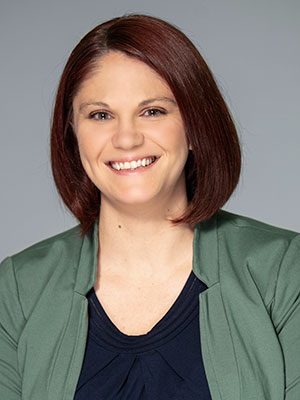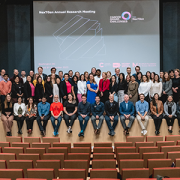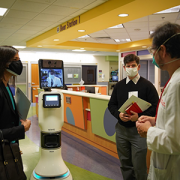Untangling the root of long COVID with research

Understanding and treating long COVID is still in its early days, but Dr. Yonts is beginning to see trends, along with hope for symptom relief.
A child who forgets the alphabet or spends 20 hours a day on the sofa will get a pediatrician’s attention. In late 2020, a stream of post-COVID patients just like this started presenting in the clinic of Alexandra Yonts, M.D., an infectious diseases specialist at Children’s National Hospital. Dr. Yonts quickly recognized the need to understand these patients and worked with hospital leadership to open the Pediatric Post-COVID Program, putting her at the forefront of clinicians and researchers investigating the disorder.
Understanding and treating long COVID is still in its early days, but Dr. Yonts is beginning to see trends, along with hope for symptom relief. She will present detailed data from a retrospective study of 254 post-COVID patients at the 2024 Children’s National-NIAID annual symposium, A New Paradigm: Infection-Associated Chronic Illnesses Affecting Children. She’ll discuss her findings on the patients’ symptoms at presentation, trajectory over time and a cluster analysis of symptom grouping. She gave an overview of her research and clinical work to Innovation District.
Q: What are you seeing in the Pediatric Post-COVID Program?
A: In the Infectious Diseases clinic, we had historically seen about one patient a month with prolonged fatigue or other persistent symptoms after an infection. Yet when COVID started, we noticed an increase in those patients. By late 2020, the numbers were increasing significantly, along with an uptick in appointment requests. We knew we needed to start a Pediatric Post-COVID Program, which launched in May 2021.
From the beginning and continuing to this day, severe fatigue is the most common reason kids come to our clinic, as is the case with adults. This ranges from marathon runners who can’t run a half-mile to those sleeping on the couch for 20 hours a day. We’re still researching the factors affecting this wide spectrum of symptoms.
Cognitive issues — often referred to as brain fog — are also significant. These can be seen as attention issues, such as difficulty remembering the alphabet in younger children or focusing in class for older children. Many kids have gastrointestinal problems like nausea, vomiting and abdominal pain. There’s also a prevalence of dysautonomia, affecting functions like blood pressure and heart rate, often seen in conditions like POTS (postural orthostatic tachycardia syndrome).
Initially, we saw kids infected early in the pandemic who had symptoms for 15 to 20 months. Our peak referrals were in 2022 after the Omicron variant, when we had a six-month waitlist. Although COVID cases have decreased, we still see kids with long-standing symptoms who have seen multiple providers without success. That’s why we’re here.
Q: Where are we in our understanding of long COVID, and where do we need to go?
A: We have lots of data but don’t know how it fits together yet. Research shows ongoing immune reactions to viral particles, with some patients having spike antigen in their blood or stool long after infection. There’s also evidence of autoimmunity and endovascular dysfunction, but we don’t yet understand the connections. It seems like viral persistence might be the underlying problem, but we haven’t pinpointed it yet.
Q: How important is it for the community to come together for events like the Children’s National-NIAID symposium?
A: It’s absolutely critical. We need researchers, clinicians and patients to collaborate. Researchers bring scientific expertise, clinicians provide practical insights and patients share their lived experiences and priorities. Conversations like the Children’s National-NIAID symposium are crucial for collaboration, thoughtful study design, advocacy and building connections with the patient community to make them feel validated and heard.
Learn more at the Children’s National-NIAID symposium on Sept. 5, by registering here.











